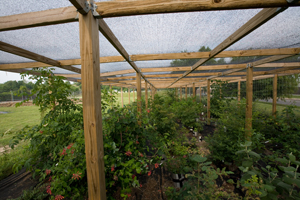Syracuse Views Summer 2025
We want to know how you experience Syracuse University. Take a photo and share it with us. We select photos from a variety of sources. Submit photos of your University experience by sending them directly to Syracuse University News at…

 A new study by a Syracuse University biologist has found that the leaves of invasive plants continue to function in the fall, long after their native cousins have hunkered down for the winter. The findings are counter to conventional wisdom, which held that plants living under the forest leafy canopy obtain most of their food via photosynthesis in the spring and early summer before the canopy blocks the amount of sunlight getting to the shrubs.
A new study by a Syracuse University biologist has found that the leaves of invasive plants continue to function in the fall, long after their native cousins have hunkered down for the winter. The findings are counter to conventional wisdom, which held that plants living under the forest leafy canopy obtain most of their food via photosynthesis in the spring and early summer before the canopy blocks the amount of sunlight getting to the shrubs.